5S, which stands for Seiri (Sorting), Seiton (Setting in order), Seiso (Shining and Sweeping), Seiketsu (Standardizing), and Shitsuke (Sustaining the practice), is a Japanese business development strategy aimed at improving quality and productivity in business. This model has been applied for years in many Vietnamese enterprises operating in supporting industries and has yielded positive results.
|
5S stands for Seiri (Sorting), Seiton (Setting in order), Seiso (Shining and Sweeping), Seiketsu (Standardizing), and Shitsuke (Sustaining the practice). |
“My productivity has increased 70% after six months of learning and applying 5S to my job,” said Do Hai Yen, a worker at Indohoa Company in Hai Phong.
Yen said she used to have to work overtime or work an additional shift and even on Sunday to finish her daily work of 1,000 product units. But now, she always finishes her work half an hour earlier than required and no longer has to work an additional shift.
“Applying 5S, we know how to save time on such work as finding tools, collecting defective products and cleaning the workplace which used to cost me and our whole team a lot of time,” Yen said, citing that it now takes her only 5-10 minutes to do such work instead of an hour previously.
Yen’s most important gain from finishing work early is that she has more time for rest and to take care of her family.
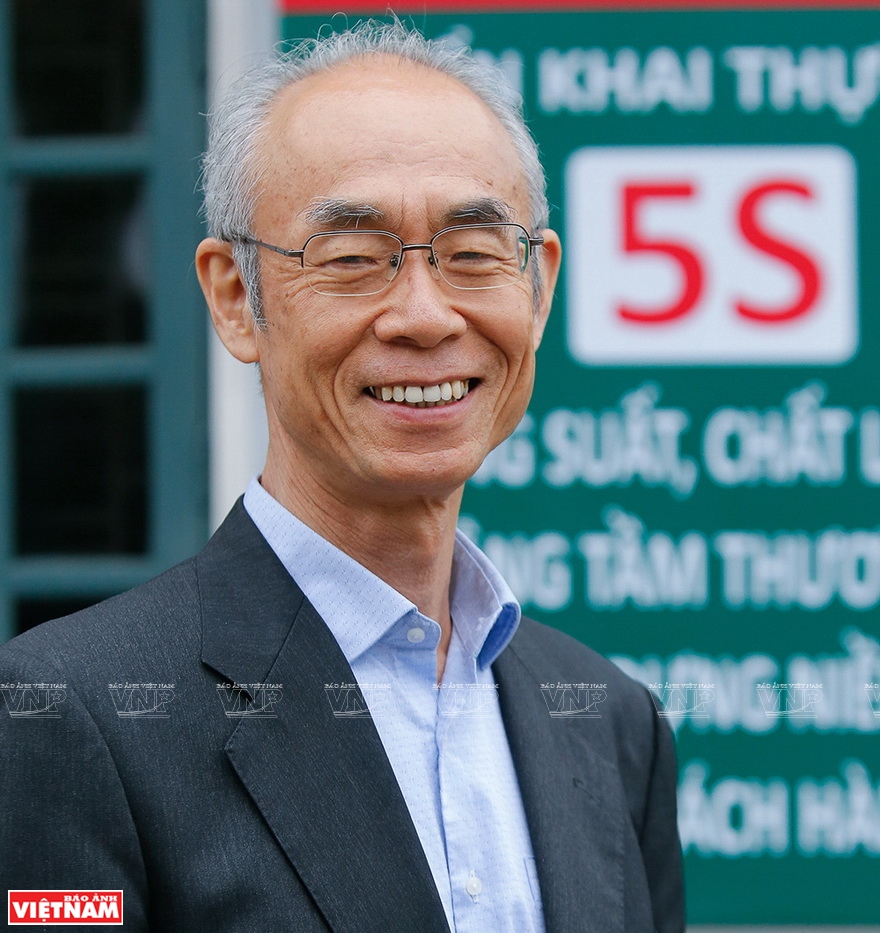
Muto Tadashi is called “teacher” by the Indohoa staff..
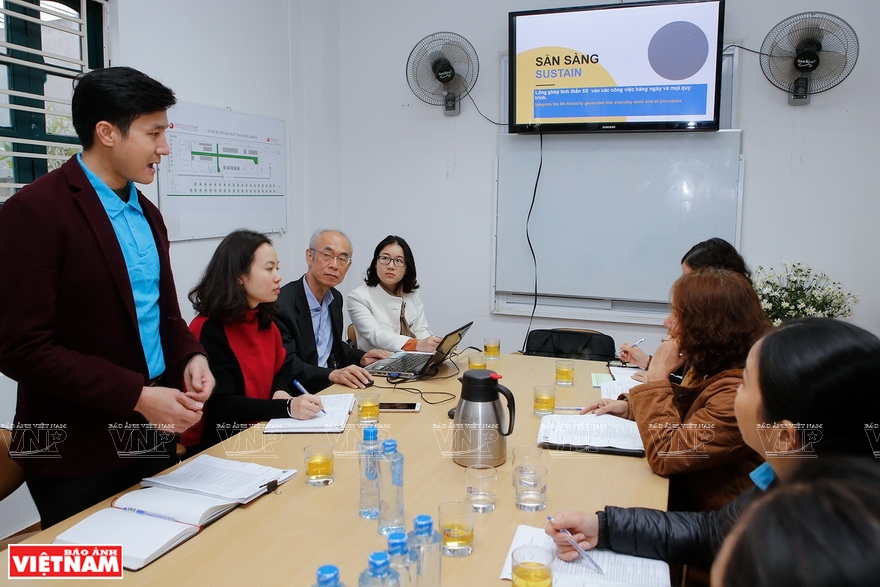
Muto Tadashi at a 5S training session.
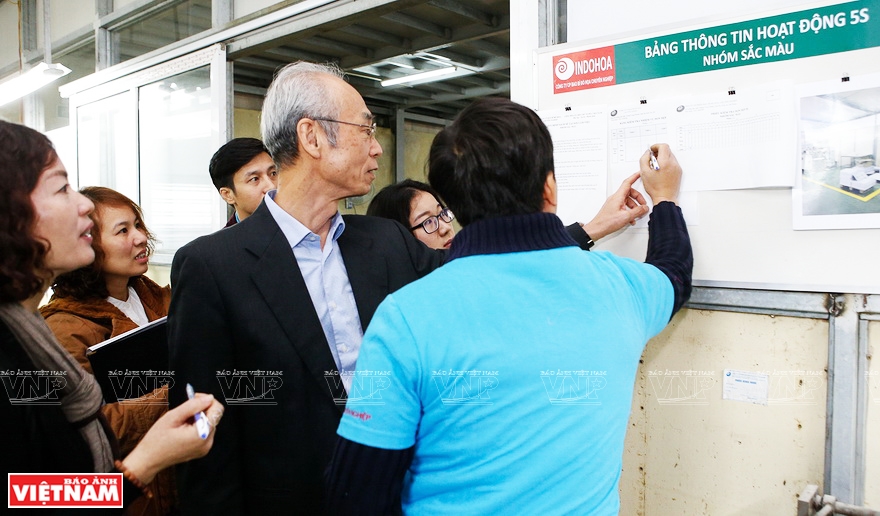
5S-related activities are recorded on the information board of each division at Indohoa.
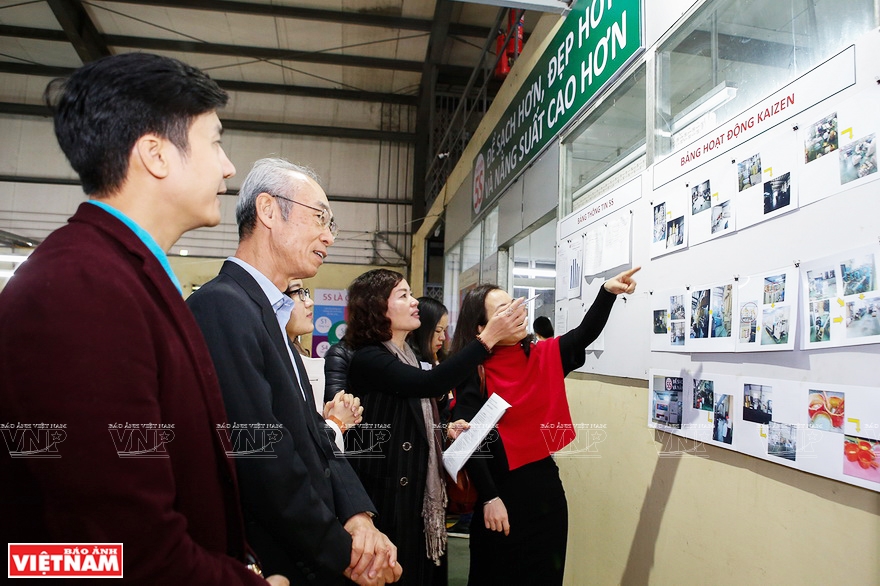
Kaizen, another strategy for quality and productivity improvement, is also introduced to the Indohoa staff.
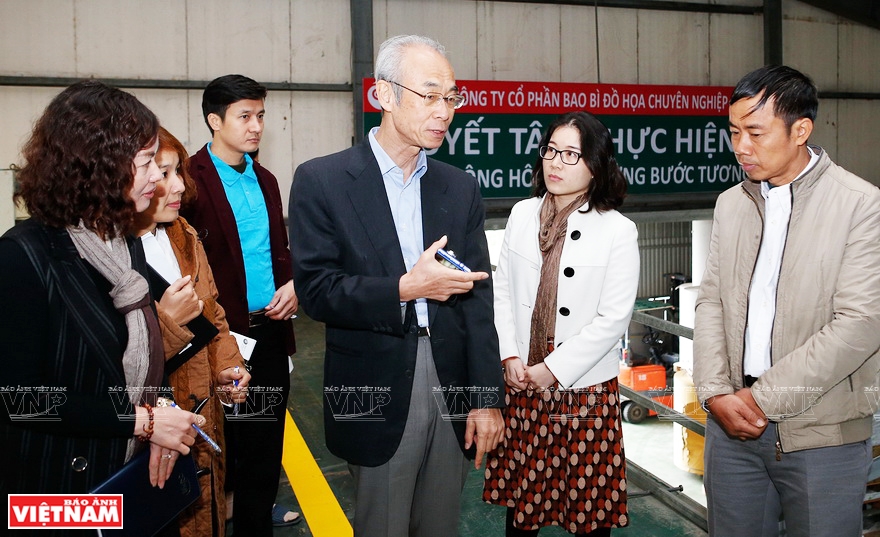
As a JICA volunteer, Muto Tadashi works at Hai Phong Planning and Investment Department to help Vietnamese enterprises improve quality and productivity.

A discussion between the Japanese volunteer and Indohoa managerial staff after a 5S training session.
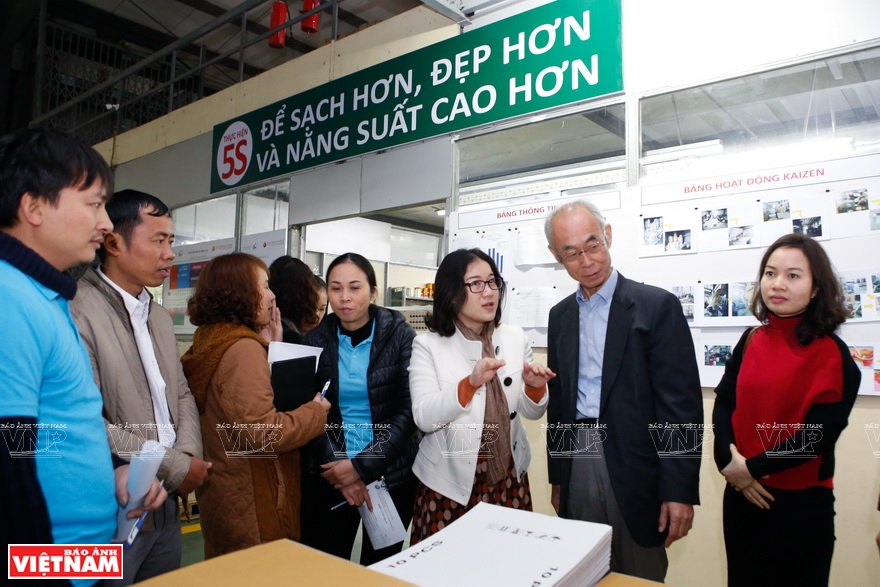 With JICA experts. With JICA experts. |
Indohoa Director Vu Quang Huy said his company has had many changes after applying 5S. The biggest change of all is to create a friendly working environment where workers can improve their performance substantially.
According to Huy, “setting in order” is the most important because this helps workers know how to arrange their work properly and cut many redundant steps.
The practice of 5S at Indohoa is taught by Muto Tadashi, a 63-year-old JICA volunteer, who used to work for multinational groups in Japan and Germany. Under JICA’s volunteer program, Muto has worked at the Hai Phong Planning and Investment Department for two years to help small and medium enterprises improve quality and productivity.
According to Muto, it is more important to train people on the methods than to give them specific solutions. His view is “to give a man a pole, not a fish.”
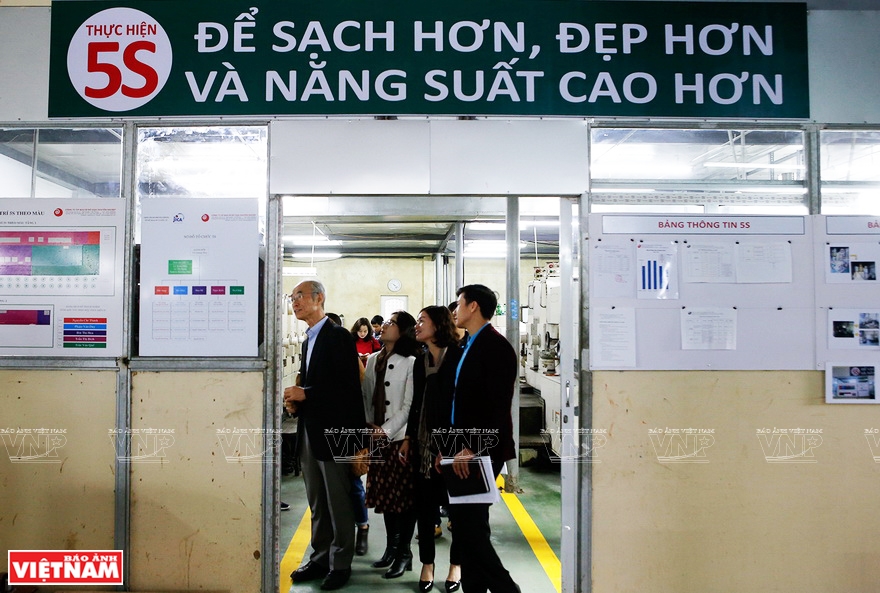
5S has helped improve the working environment at Indohoa.
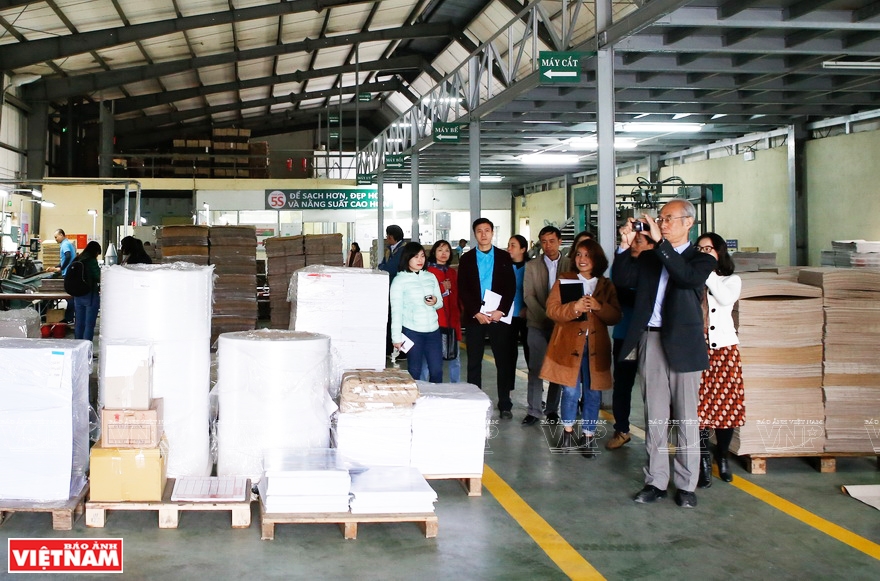
“Setting in order” is the most important, according to Indohoa director Vu Quang Huy.
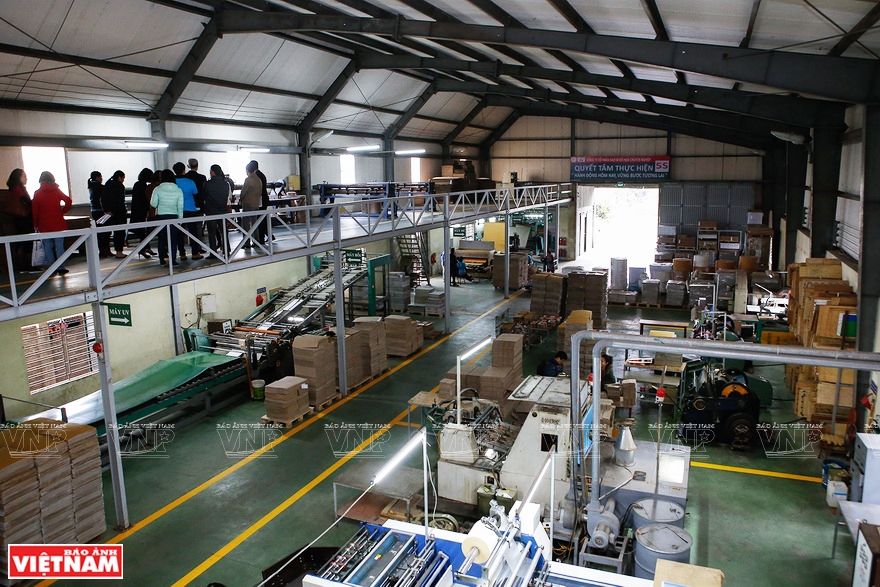
The company’s working space is clean and neat after 5S is applied.
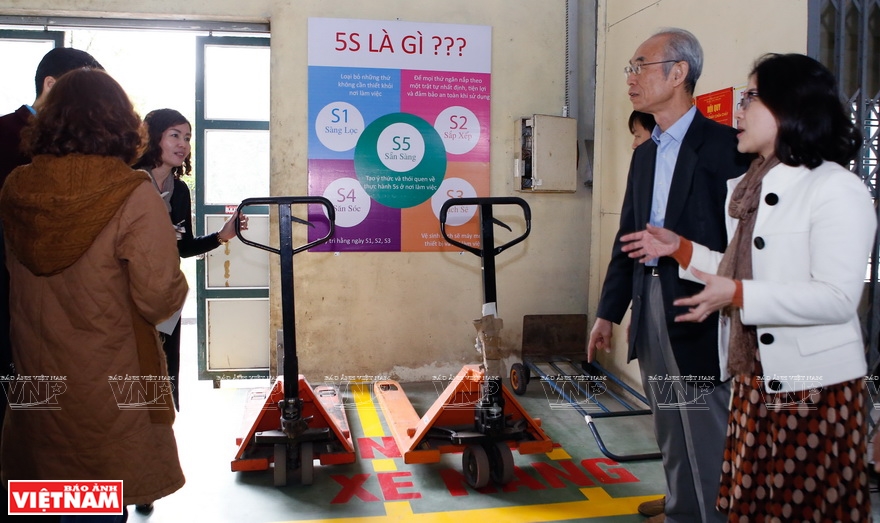
5S charts are placed at easy-to-find places in the company.
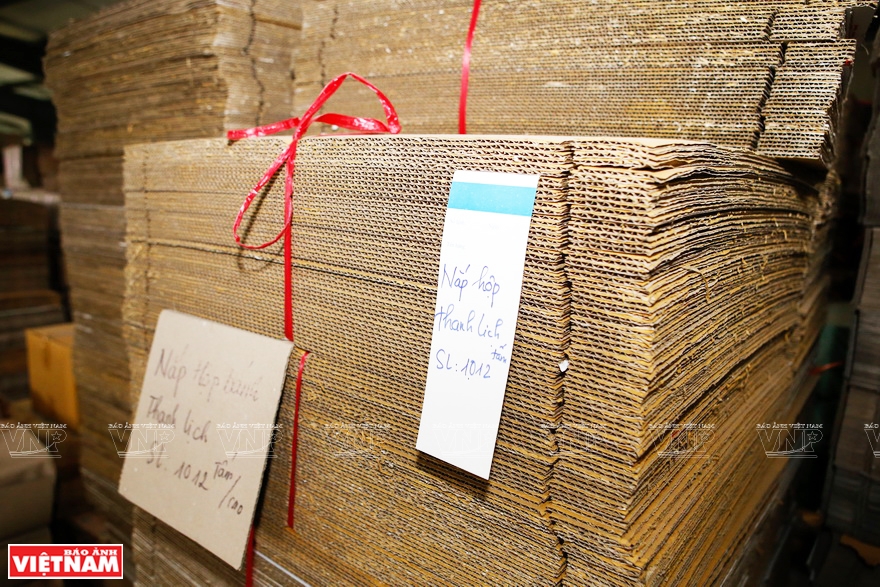 5S has proven to be an effective tool for Indohoa to improve its workers’ productivity. 5S has proven to be an effective tool for Indohoa to improve its workers’ productivity. |
JICA’s project on productivity improvement for small and medium enterprises in Vietnam offers a training program which closely combines theory and practice. This has made Vietnamese businesses more mindful about the importance of improving the working environment and increasing the satisfaction of employees, which is key to raising labor productivity.
Story: Thao Vy - Photos: Viet Cuong